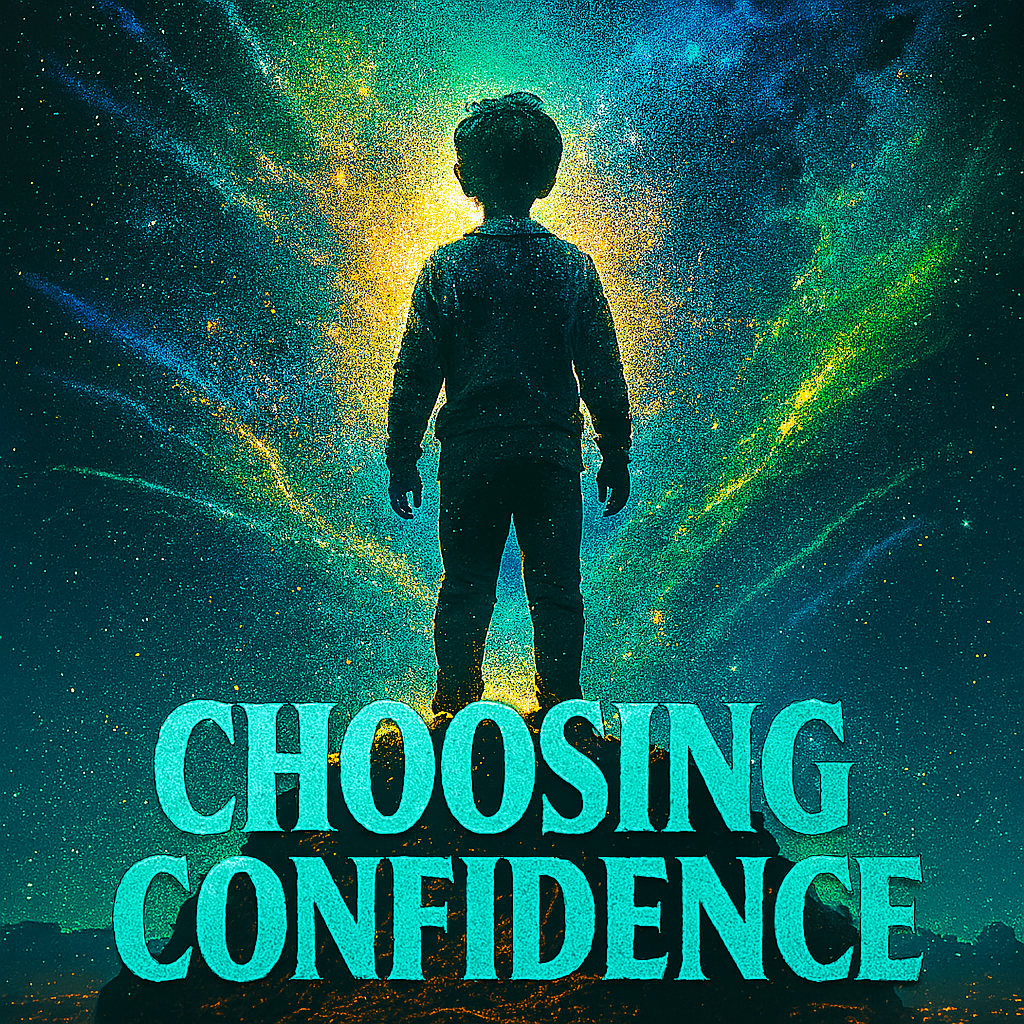
Inner Strength Self Confidence
The Self Confidence Powered DynamicAnatomy – What Truly Builds Inner Strength
Confidence is not a fixed trait – it’s a dynamic psychological state shaped by biology, behavior, and experience. It influences how people make decisions, handle stress, and interact with others. True confidence is built through repeated mastery, emotional regulation, and social reinforcement – not through surface-level bravado. Whether rebuilding after setbacks or seeking to elevate your baseline self-belief, this guide offers a fact-based roadmap for inner strength.
Self-efficacy and mastery experiences
Confidence grows when people repeatedly succeed at tasks they find meaningful – this is known as mastery experience. Psychologist Albert Bandura defined self-efficacy as the belief in one’s ability to succeed – and it’s built through direct experience. Completing challenges reinforces competence – and even small wins accumulate into lasting confidence. People who interpret failure as feedback rather than defeat maintain higher self-efficacy. The brain encodes success through dopamine release – reinforcing motivation and focus. Mastery experiences also reshape neural pathways – strengthening cognitive resilience.
Confidence is not about perfection – it’s about persistence and learning. Individuals who track progress and celebrate milestones build stronger self-belief. Mastery is most powerful when aligned with personal values – making the effort feel purposeful. Confidence built this way is durable – because it’s rooted in evidence, not illusion.

Emotional regulation and stress response
Confident individuals tend to regulate their emotions effectively – especially under pressure. Emotional regulation involves managing feelings without suppressing them – allowing for clear thinking and adaptive behavior. The prefrontal cortex plays a key role in this process – helping modulate fear and impulsivity. People who practice mindfulness and cognitive reappraisal show improved emotional control – which supports confidence. Chronic stress undermines self-belief – by flooding the brain with cortisol and impairing decision-making. Techniques like breathwork, journaling, and structured reflection help reduce stress and restore clarity.
Emotional regulation also improves interpersonal dynamics – making confident people more empathetic and composed. Building emotional literacy – the ability to name and understand feelings – enhances self-awareness. Confidence thrives when emotions are acknowledged and integrated – not ignored. Resilience is a byproduct of emotional regulation – and it reinforces belief in one’s ability to handle adversity.
Body language Communication
Body language and physical presence
Nonverbal cues shape how others perceive confidence – and how individuals feel about themselves. Upright posture, steady eye contact, and open gestures signal self-assurance – and influence internal states. Research shows that adopting expansive postures increases testosterone and reduces cortisol – boosting confidence. Physical presence is not about dominance – it’s about congruence between intention and expression. People who move deliberately and speak with clarity are perceived as more confident – regardless of content.
Mirror neurons in the brain respond to others’ body language – creating feedback loops of confidence or insecurity. Practicing intentional movement – such as walking with purpose or standing tall – reinforces self-belief. Physical fitness also contributes to confidence – by improving energy, mood, and self-image. Somatic awareness – tuning into bodily sensations – helps regulate anxiety and enhance presence. Confidence is embodied – and the body often leads the mind.
Social validation and belonging
Humans are wired for connection – and confidence is shaped by social feedback. Supportive relationships provide validation – reinforcing belief in one’s worth and abilities. Belonging activates the brain’s reward system – increasing dopamine and oxytocin levels. People who feel accepted are more likely to take risks and express themselves authentically. Social rejection, on the other hand, can erode confidence – especially during formative years. Building a network of affirming relationships strengthens resilience and self-esteem.
Group dynamics influence confidence through norms and expectations – individuals often rise to meet the standards of their peers. Mentorship and constructive feedback accelerate growth – by offering perspective and encouragement. Celebrating others’ success fosters collective confidence – reducing competition and increasing collaboration. Confidence is relational – and thrives in environments of trust and mutual respect.

Cognitive reframing and mindset
How people interpret experiences shapes their confidence – and mindset plays a central role. Growth mindset, a concept developed by Carol Dweck, emphasizes learning over fixed ability – encouraging persistence and adaptability. Cognitive reframing involves shifting perspective – viewing challenges as opportunities rather than threats. This process activates the brain’s executive functions – improving problem-solving and emotional regulation.
Confident individuals tend to ask constructive questions – focusing on solutions rather than blame. Self-talk influences mindset – and affirmations grounded in truth reinforce belief. Reframing failure as feedback builds resilience – and reduces fear of trying again. Mindset is shaped by language, culture, and personal history – but it can be consciously reshaped. Journaling and reflective writing support cognitive reframing – by making thought patterns visible. Confidence grows when people choose empowering interpretations – and act on them consistently.
Competence and skill development
Confidence is closely tied to competence – the ability to perform tasks effectively. Skill development requires deliberate practice – focused effort with feedback and adjustment. People who invest in learning build confidence through evidence – not assumption. Competence is domain-specific – meaning confidence in one area may not transfer to another. Tracking progress reinforces motivation – and helps individuals see their growth over time. Feedback from trusted sources accelerates skill acquisition – by highlighting strengths and areas for improvement. Confidence increases when people feel prepared – and preparation reduces anxiety.
Mastery involves both technical skill and intuitive understanding – integrating knowledge with experience. Learning environments that encourage experimentation support confidence – by reducing fear of failure. Competence is cumulative – and every new skill adds to the foundation of self-belief.
Authenticity and values alignment
Confidence deepens when people act in alignment with their values – creating internal coherence. Authenticity involves expressing one’s true self – without distortion or performance. Values serve as a compass – guiding decisions and behavior with clarity. People who know their values are less swayed by external pressure – and more grounded in their choices. Acting authentically reduces cognitive dissonance – the discomfort of conflicting beliefs and actions. Confidence grows when individuals feel congruent – when their inner and outer worlds match. Values-based living fosters integrity – and integrity reinforces trust in oneself. Reflection practices help clarify values – such as journaling, dialogue, or meditation. Authenticity also enhances relationships – by fostering transparency and mutual respect. Confidence is not about pleasing others – it’s about honoring one’s truth.
Resilience and recovery from setbacks
Setbacks are inevitable – but how people respond determines their confidence trajectory. Resilience involves bouncing back from adversity – with learning and growth. Confident individuals view failure as temporary and specific – not permanent or personal. Recovery requires emotional processing – acknowledging disappointment without dwelling in it. Support systems play a key role in resilience – offering perspective and encouragement. Reframing setbacks as part of the journey builds psychological flexibility.
Confidence grows when people prove to themselves that they can recover – and continue forward. Resilience is strengthened through rituals and routines – which provide structure and stability. Physical health supports emotional recovery – through sleep, nutrition, and movement. Confidence is forged in the fire of challenge – and tempered by reflection. Every comeback reinforces belief in one’s strength.

Goal setting and future orientation
Confidence thrives on clarity – and goal setting provides direction and purpose. Specific, measurable goals create structure – making progress visible and achievable. Future orientation involves envisioning desired outcomes – and taking steps toward them. People who set goals are more likely to persist – even when motivation wanes. Confidence increases when individuals see themselves making progress – reinforcing belief in their capabilities. Goals should be aligned with values – ensuring motivation is intrinsic. Breaking goals into smaller tasks reduces overwhelm – and builds momentum. Visualization techniques enhance goal pursuit – by activating neural pathways associated with success. Accountability supports follow-through – whether through peers, mentors, or self-monitoring. Confidence grows when people feel in control of their future – and act with intention.
Self-awareness and introspection
Understanding oneself is foundational to confidence – and self-awareness is the key. Introspection involves examining thoughts, emotions, and behaviors – with curiosity and honesty. People who know their strengths and limitations make better decisions – and feel more grounded. Self-awareness reduces reactivity – allowing for thoughtful responses. Practices like journaling, meditation, and therapy enhance introspection – by creating space for reflection. Confidence grows when individuals accept themselves – without denial or distortion. Awareness of triggers and patterns supports emotional regulation – and improves relationships. Self-awareness also fosters humility – recognizing that growth is ongoing. Feedback from others can deepen insight – when received with openness. Confidence is not blind certainty – it’s informed self-understanding.
Neurobiology and brain chemistry
Confidence has biological roots – shaped by brain structure and chemistry. The prefrontal cortex regulates decision-making and emotional control – essential for confidence. Dopamine reinforces motivation and reward – supporting goal pursuit. Oxytocin enhances social bonding – increasing trust and belonging. Cortisol, the stress hormone, can undermine confidence – especially when chronically elevated. Physical activity boosts neurochemical balance – improving mood and focus. Sleep is critical for cognitive function – and sleep deprivation impairs confidence. Nutrition influences neurotransmitter production – affecting emotional stability. Brain plasticity allows for change – meaning confidence can be trained. Neurofeedback and biofeedback offer tools for enhancing self-regulation. Confidence is not just psychological – it’s physiological.
Identity and narrative construction
How people tell their story shapes their confidence – and identity is built through narrative. Individuals construct meaning from experiences – creating coherence and purpose. Confident people tend to frame their lives with agency – emphasizing choice and growth. Narrative therapy explores how stories influence self-perception – and offers tools for rewriting them. Identity is dynamic – evolving with new insights and experiences. Cultural and familial narratives impact confidence – shaping beliefs about worth and possibility. Reclaiming authorship over one’s story fosters empowerment – allowing individuals to redefine their path.
Language plays a key role – the words people use to describe themselves influence how they feel. Reflective practices help uncover limiting narratives – and replace them with affirming ones. Confidence grows when people see themselves as protagonists – not passengers.
Environmental cues and context
The spaces people inhabit affect their confidence – often in subtle but powerful ways. Environments that feel safe and inspiring support self-expression – while chaotic or judgmental settings can suppress it. Lighting, color, and spatial design influence mood and focus – shaping how people feel and behave. Confident individuals often curate their surroundings intentionally – choosing objects and layouts that reflect their values. Nature exposure boosts psychological well-being – reducing stress and enhancing clarity.
Noise levels and crowd density affect emotional regulation – influencing confidence in social settings. Cultural context also matters – norms and expectations shape what confidence looks like. People thrive when their environment aligns with their identity – reinforcing authenticity. Rituals and routines embedded in space support consistency – which builds trust in oneself. Confidence is not just internal – it’s shaped by the external world.

Decision-making and autonomy
Confidence is reinforced through autonomous decision-making – the ability to choose and act independently. People who trust their judgment are more likely to take initiative – and less likely to second-guess themselves. Decision-making involves weighing options, assessing risks, and committing to action – all of which build self-efficacy. Autonomy supports intrinsic motivation – making actions feel purposeful and aligned. Confident individuals often reflect before deciding – but avoid paralysis by analysis.
Small decisions build momentum – reinforcing belief in one’s ability to navigate complexity. Boundaries are part of autonomy – saying no when needed strengthens self-respect. Decision fatigue can erode confidence – so simplifying choices helps preserve clarity. Learning from past decisions – both good and bad – deepens wisdom and resilience. Confidence grows when people feel they are steering their own lives.
Feedback integration and adaptive learning
Confidence is not about being right – it’s about being open to growth. People who integrate feedback constructively build adaptive intelligence – learning from experience without losing self-worth. Feedback offers perspective – highlighting blind spots and reinforcing strengths. Confident individuals seek feedback proactively – viewing it as a tool for refinement. Emotional regulation is key – receiving critique without defensiveness supports learning. Feedback should be specific and actionable – vague comments can confuse rather than clarify. Reflection helps integrate feedback – turning insight into strategy. Adaptive learners adjust their approach based on results – reinforcing belief in their flexibility. Confidence increases when people see themselves evolving – not just performing. Peer feedback fosters collaboration – building mutual respect and shared growth. Confidence thrives in cultures of learning – not judgment.
Conclusion
Confidence is not a singular trait – it’s a layered, adaptive system built through experience, reflection, and intentional action. From neurobiology to narrative, every factor explored here contributes to a deeper understanding of what makes someone truly confident. It’s not about perfection or performance – it’s about coherence, resilience, and self-trust. Confidence grows when people align with their values, regulate their emotions, and act with purpose. It’s shaped by relationships, environments, and the stories we tell ourselves. Most importantly, confidence is trainable – and every moment offers an opportunity to reinforce it. Whether through small wins, honest reflection, or courageous decisions, the architecture of confidence is always under construction. And that’s what makes it powerful – it’s alive, evolving, and uniquely yours.
Join the discussion
What practices have helped you build confidence in your own life – and which ones still challenge you?
#ConfidenceArchitecture #SelfEfficacyInAction #EmotionalResilience #AuthenticLiving #MindsetMatters #NarrativePower #AdaptiveLearning #InnerStrength #ValuesAlignment #ResilientIdentity #GrowthThroughReflection #EmbodiedConfidence #NeuroConfidence #DecisionAutonomy #ConfidenceIsTrainable



4 thoughts on “The Inner Strength Self Confidence Powered Dynamic Anatomy”